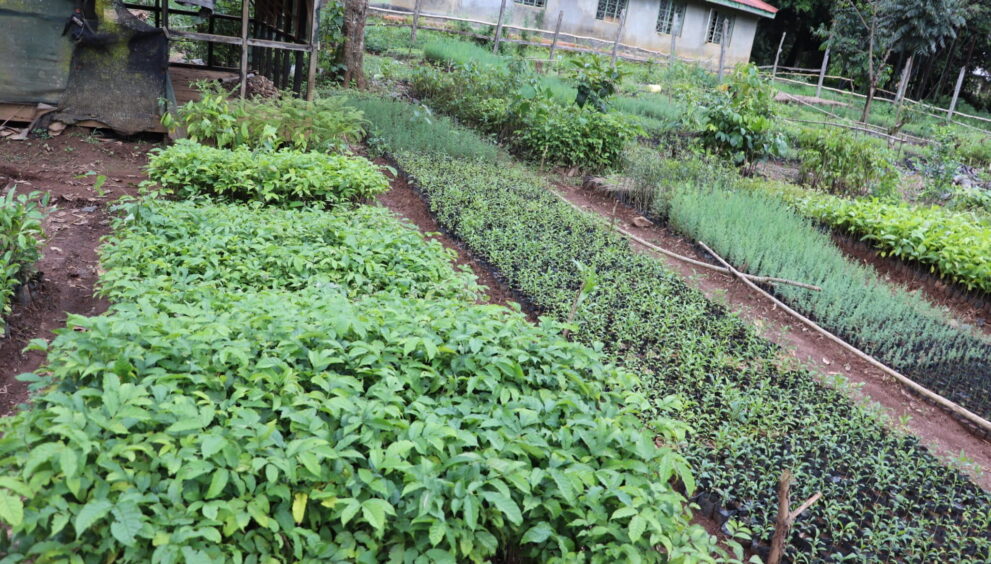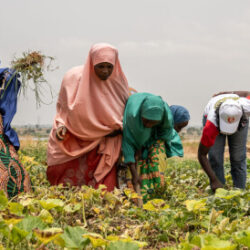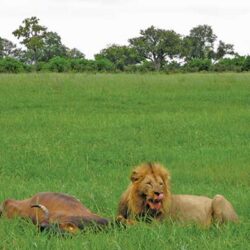KAKAMEGA, Kenya —In the rain-drenched Nzoia Forest Plantation, a unique government program is combining the twin goals of reforestation and food security. The Plantation Establishment and Livelihood Improvement Scheme (PELIS) allows local communities to cultivate crops within state-owned timber plantations, an initiative that has a long and sometimes controversial history in Kenya.
Forester Jackton Hadulo, who manages the 5,300-hectare plantation, says the program works by enlisting communities to plant and care for tree seedlings in areas that have been cleared by logging or wildfires. In return, participants gain temporary access to the land to grow staple crops like maize and potatoes.
“We are collaborating with members of the community who live around the forest plantation by allowing them to cultivate the land and plant their food crop in straight lines, after which we also work with them to plant tree seedlings in between the lines,” Hadulo said.
This co-management model is not just about reforestation. It’s a vital source of income and food for thousands of families. Janet Ayiti, a single mother of five and a member of the Nzoia Community Forest Association, has been farming on her plot for 12 years. She credits the income from her harvests with helping her open a small grocery shop and support her family.
“Every growing season, I harvest between 20 and 25 90-kilo bags of maize from the plantation—enough to feed my family,” she said.
The PELIS scheme is a refined version of the previous “shamba system,” which was plagued by a lack of oversight and corruption. The current iteration, introduced in 2007, relies on Community Forest Associations (CFA) to vet participants. This includes confirming a candidate lives within three kilometers of a plantation and is in genuine need of land.
Wilfred Mulindi, chairman of the Nzoia CFA, says this vetting process has brought a new level of transparency and accountability. “After every season of planting, we audit each plot allocated to individual farmers, and those whose tree survival is visibly less are disqualified for three seasons,” he told Mongabay.
The results are significant. According to Anthony Musyoka, Deputy Chief Conservator of Forest Plantations, the tree survival rate under PELIS is 75-80%, far exceeding the 40% rate for trees planted by other means. The program has helped the Kenya Forest Service (KFS) re-establish commercial plantations on over 8,000 hectares in the last two years.
However, the program is not without its critics. Theresa Aoko, National Coordinator of the Kenya Forest Working Group, supports PELIS but raises concerns about its impact on biodiversity. The use of monocultures and the potential for synthetic fertilizers and pesticides could pose a threat to the forest ecosystem.
“I firmly support the PELIS system because,the apart from helping in the restoration of forest plantations, it is a source of livelihoods to thousands of households across the country,” Aoko said. “But the way it is done, where farmers concentrate on monocropping, it means that they will tend to use synthetic fertilisers and chemical pesticides, which is a real threat to forest biodiversity.”
Aoko advocates for KFS to train PELIS farmers in agroecology, which would prohibit the use of synthetic chemicals and help mitigate the environmental impact. She believes that if enforced strictly, this would allow the system to do “more good than harm to the forest ecosystem and to community livelihoods.”




